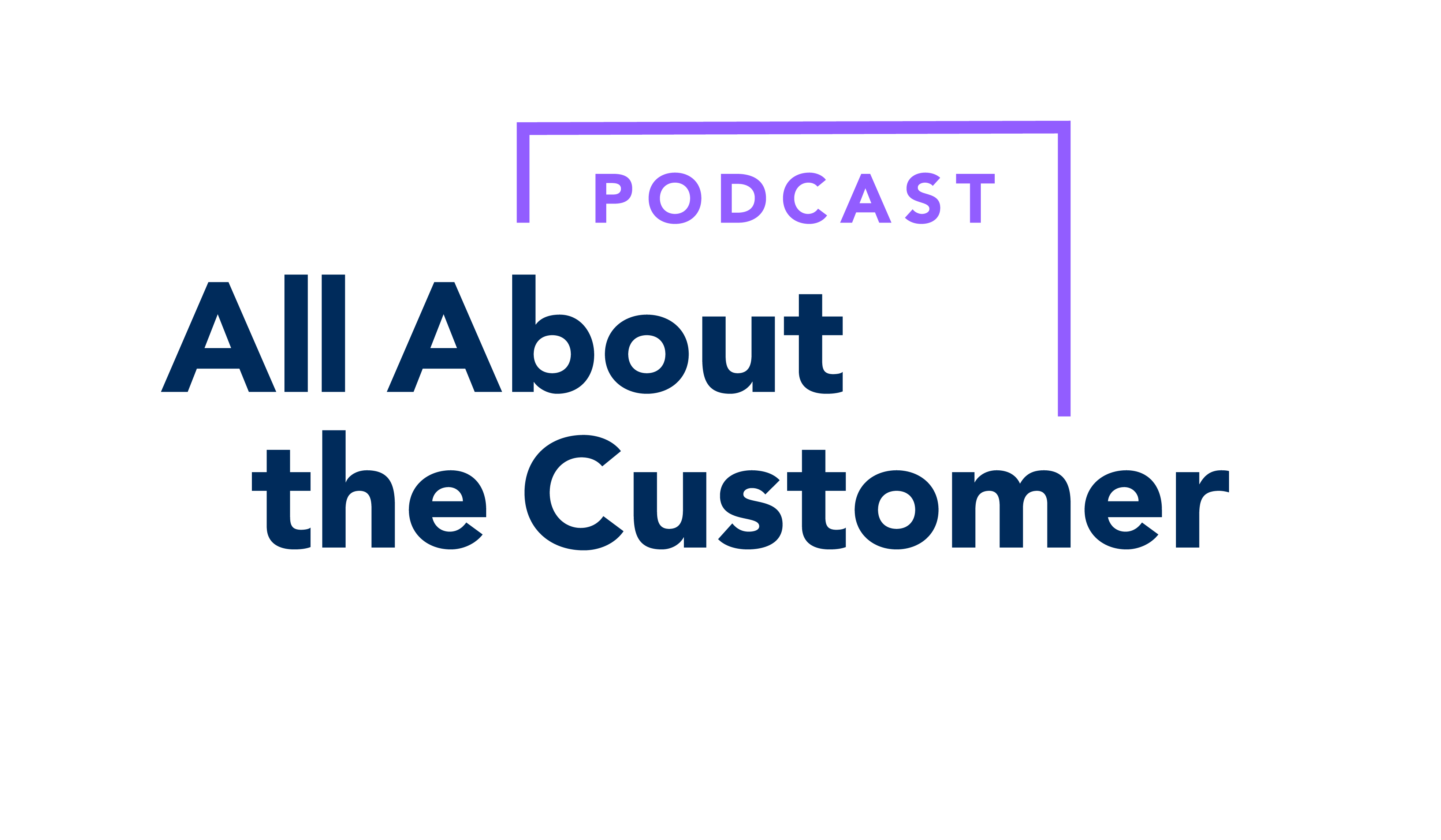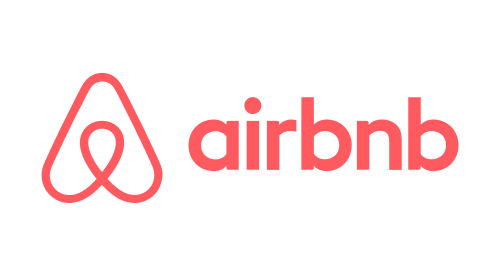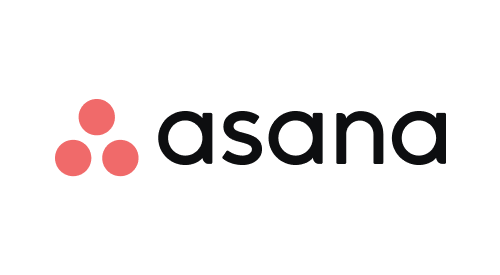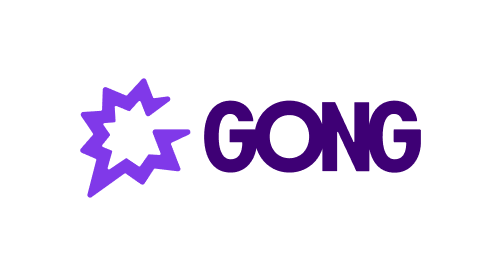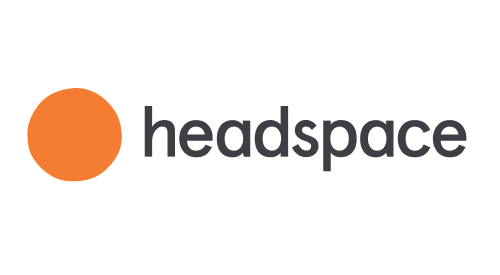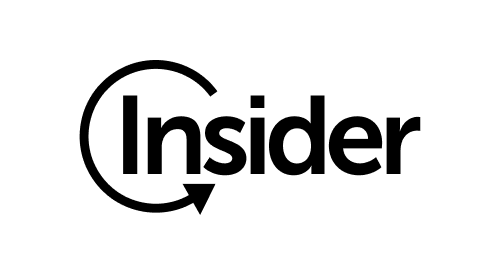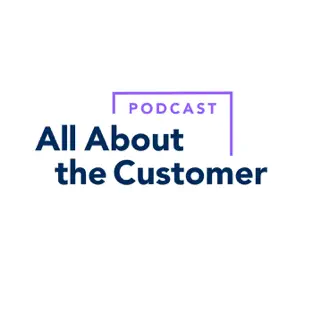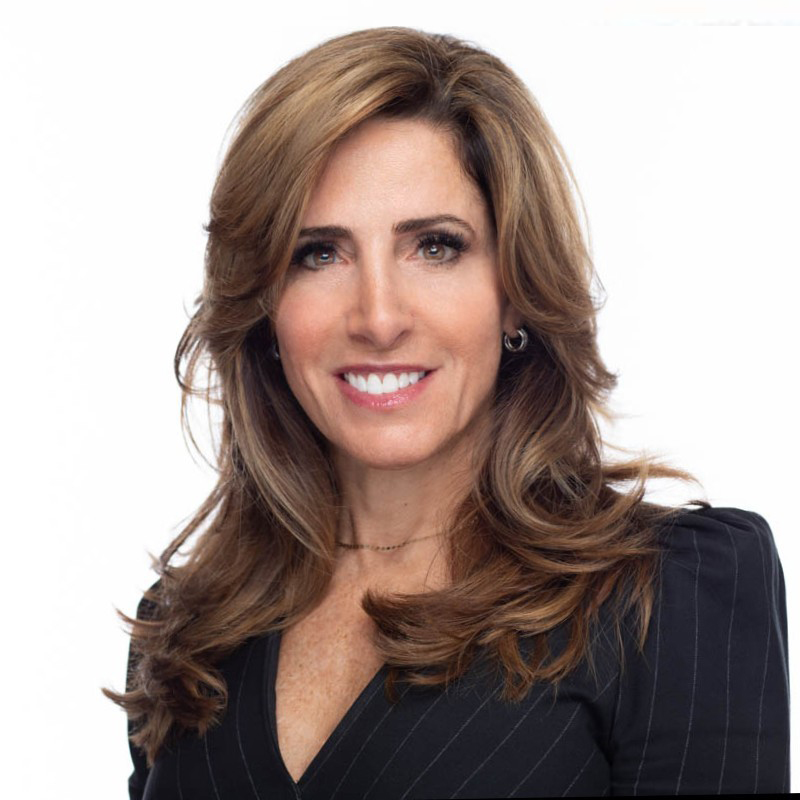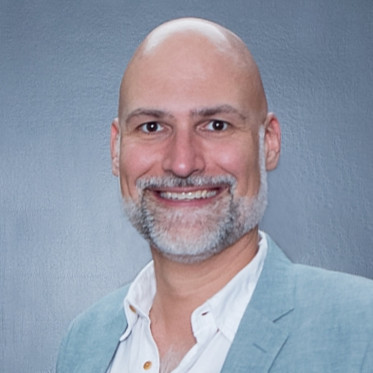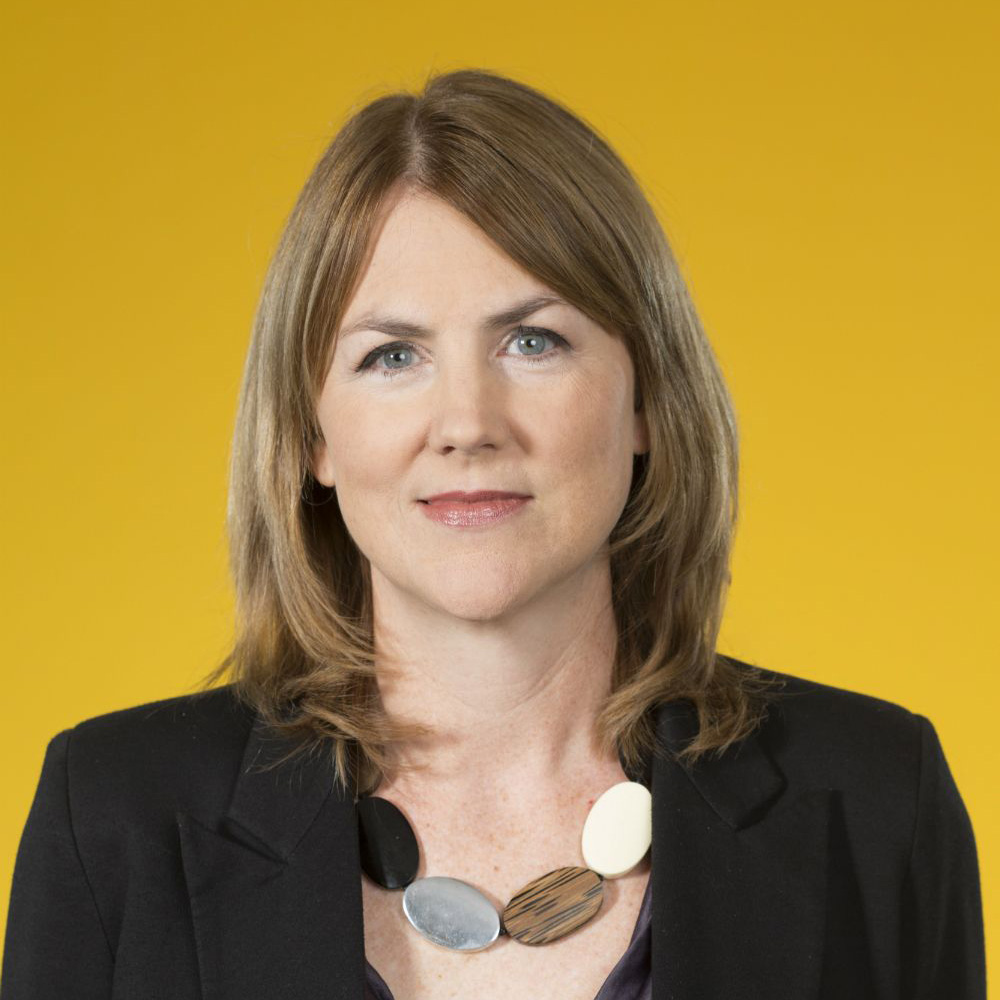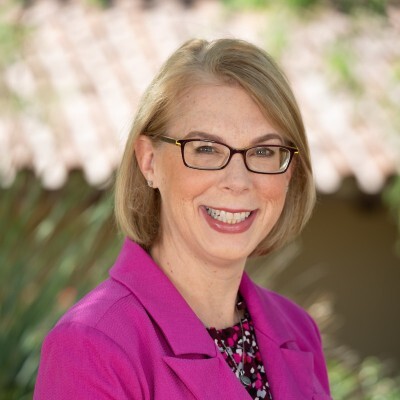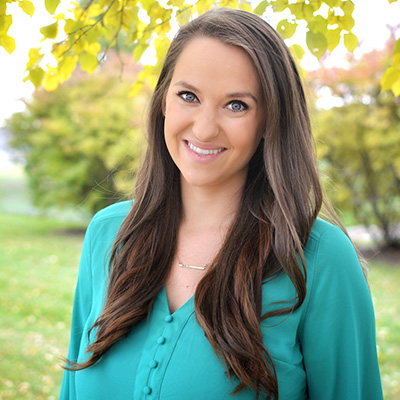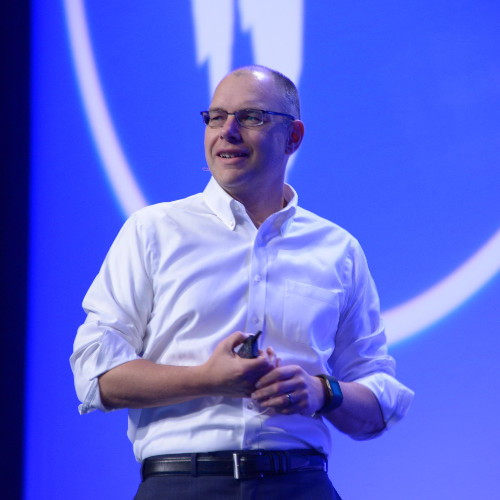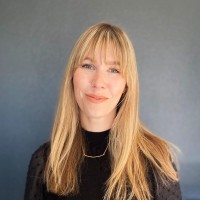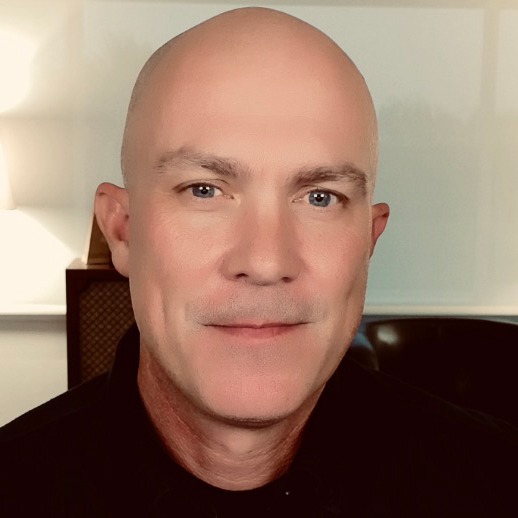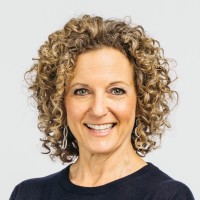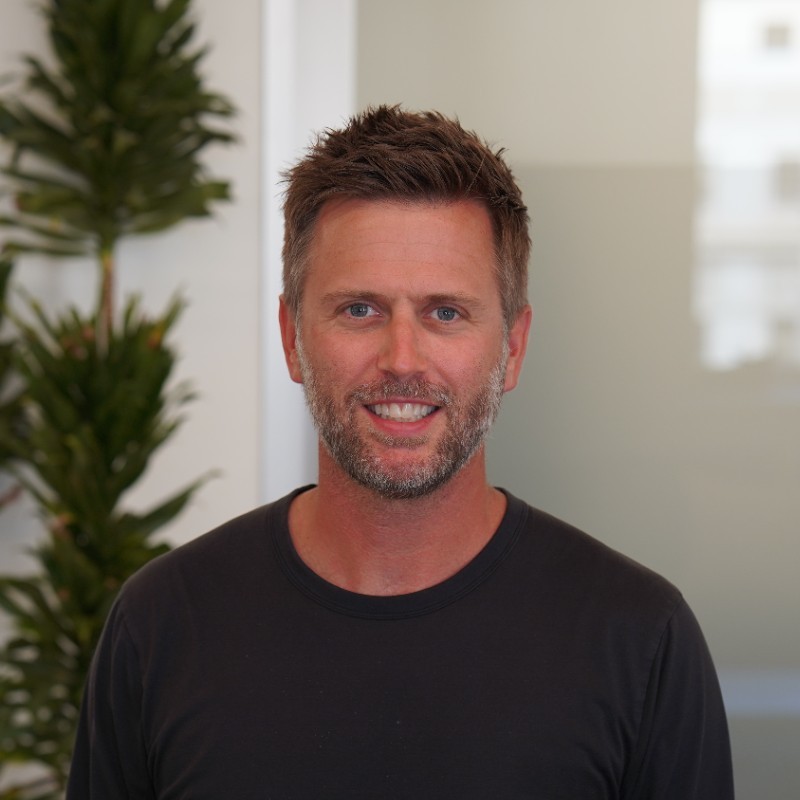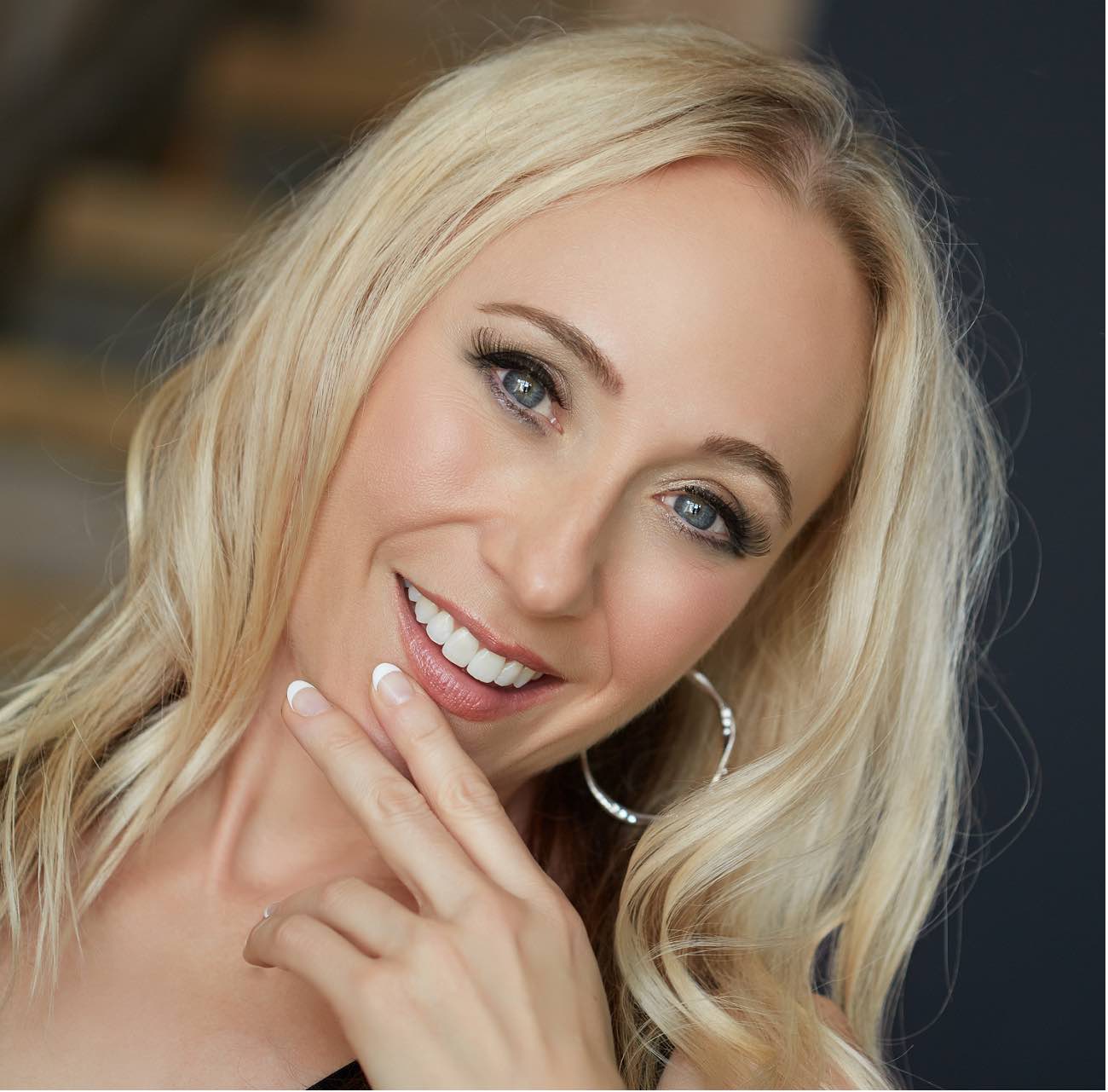Dan Kalmar:
Welcome to the All About the Customer podcast, brought to you by Influitive, where we talk with customer-obsessed people to uncover how you can be more customer-focused. I’m your host, Dan Kalmar.
Today, I’m joined by a lot of people and also no one. As 2023 comes to a close, we thought it made sense to look back on the year that was. We had some incredible guests on this year and wanted to capture some of the best insights we learned over this year’s 18 episodes. So I’m going to take you through a quick recap of each episode, along with a short clip with some of their best ideas. Hope you enjoy.
We’re starting off strong with Episode 15, which was the first episode of the year. This one was with the outspoken Brent Adamson. I had a lot of fun with this one, not that I don’t have fun with all of them, but Brent is just a personality. He’s the best-selling co-author of The Challenger Customer and the Challenger Sale, and his episode was all about how sales and marketing can better support customers. In Brent’s clip, he talked about what he believes is the single thing we should be focusing on right now, which is customer confidence.
Brent Adamson:
When I talk to CEOs, heads of sales, heads of marketing, anyone in an audience like this, I would suggest very humbly, just based on research, not just my opinion: If there’s one thing that we could and should be solving for right now, as a commercial organization, whether it’s sales or marketing, it is we need to be solving for customer confidence.
And this is something that became very, very clear in the data at Gardner, is that it’s the single biggest attribute that drives up the likelihood of customers buying a bigger deal with a broader scope at the higher price point and feeling better about it. So we used to call this a high-quality, low-regret deal, and ideally, we were always trying to say, “How do I increase the probability of customers buying a high-quality, low-regret deal?”
And by far, and it’s hard, Dan, to explain non-statistically how much, by far. It’s not even an order of magnitude; it’s multiple orders of magnitude. It’s a bar chart with bar, bar, bar, bar. Do you know what I mean? That’s the layman’s version of that, but there’s actually-
Dan Kalmar:
That was a great visualization there.
Brent Adamson:
There are numbers on these bars, I promise you.
Dan Kalmar:
You just said “Bar” several times, but I totally knew what you meant.
Brent Adamson:
At CEB, we literally had a name for this. We used to call it big bar, little bar. It’s like whenever you find a bar chart with a big bar, little bar, you knew you had something, right? And this is big bar, massively huge bar. And the massively huge bar was customer confidence. In other words, if you’re trying to drive up the likelihood of a high-quality, low-regret deal, by far the single biggest thing you want to focus on the single biggest, not the single thing, but the single biggest thing, right? There’s other things you could do, but if you want to, like where’s the incremental benefit? It’s customer’s confidence.
But briefly, the thing that when you break down customer confidence, the thing that was interesting was confidence of what? What does that mean exactly? And it turns out it was things like from a buying perspective, how confident are we as a buying group that we’ve even asked the right questions? How confident are we that we looked at the right information? How confident are we that we drew the right conclusions from looking at that information? How confident are we that we’ve identified the right problem, that we’re pursuing the right solution, that we’ll be able to implement whatever we buy? Again, there’s a whole bunch of these different dimensions, but that there’s a common denominator across all those dimensions of confidence, Dan. I don’t know if you picked it up or not, but notice every one of those dimensions of confidence has nothing to do with you as a supplier.
Dan Kalmar:
In episode 16, I spoke with Natalie Galette, who at the time was customer marketing manager at HubSpot. In this episode, we dove into advocacy fatigue. The thing that happens when we just keep asking our customers for stuff and they get tired, both metaphorically and literally. But through the work Natalie had done at HubSpot, they laid out a path to their customers to avoid this fatigue. In the clip from her episode, Natalie talks about an important part of ensuring we don’t wear out our customers, and that’s empathy.
Natalie Galette:
So empathy, it is a part of HubSpot’s culture code. So that’s also why I was excited to work there. One of my favorite words is empathy. When you really put yourself in someone else’s shoes, and it’s easier said than done. Before you think about your personal goals or the things that you’re trying to do, really think about the things that the customer wants. For example, if you have a customer who is going through a relaunch or a brand relaunch, I have been on that side as a marketer, where I’ve had to do a company rebrand. That is a stressful time. So if you are in the customer’s position and you still need the things that you need, right now, they may not want to do, for example, a case study. They may be more inclined to do an online review that takes 10 minutes. But a case study takes some time, it takes steps, it takes communication.
So really moving around and thinking about, okay, when is their launch, asking those questions. When is your launch? And knowing kind of saying, well, tell me what that process looks like. I don’t know about everyone else, but I know that with the launch or rebrand, there’s the before, there’s the during, there’s the after. So yes, you launch yay, but then you have a long process afterwards. That can be a little bit challenging. So then you can say, okay, I know it’s going to be challenging. How long do you think it’s going to take? Three months? Then we can schedule your case study for four months afterwards.
So just really having that, let me think about what the customer’s needs are and really being a little bit more flexible, and not letting it go too far to where the customer may not do any of the things that you may have agreed to at the beginning, but also saying, okay, I’m going to be understanding.
And really, if you don’t know, really talk to your team members. Talk to the sales team, talk back to the customer success team and say, hey, how is communication going with them? What are their pain points that you noticed? Because the customer may not feel comfortable telling you, especially as a marketer, you don’t always get to talk to the customer as much as maybe sales did or maybe even customer success did. So making sure you talk to other people and you listen to what their challenges are, and basically for maybe half an hour to an hour, put all of your goals on the back burner, pretend they’re not there, and say, if you didn’t have these goals, what would you want to understand about the customer? So really putting that person first and then you second, to the point where they feel comfortable and say, you know what, this is a fair consideration.
Dan Kalmar:
Episode 17 was with the Oprah of customer gift giving. Cassie Snead, who’s Senior Manager of Customer Marketing at Reputation. I don’t know that she’s given away any cars lately, but she definitely knows the art of customer gift giving, and that’s what her episode was all about. In this clip, Cassie shares her framework for their overall gifting strategy that can help you better understand how to work it into your own program.
Cassie Snead:
So I think when you’re looking at your gifting strategy overall, when you’re starting to think about all the different customer lifecycle touch points you want to hit, look at that customer from start to finish. So if you’re thinking about welcome gifts when they first join on with you, to those renewal gifts, to advocacy gifts, just making sure you’re having that timed out appropriately so you can look at that journey, their maturity with you, to see when the timing is appropriate. And then also comparing that just to your overall promotional calendar. So you’re trying to time out, if someone’s welcome is right, when your end of the year gifts might be trying to figure out the timing and the overlaps. It’s not too much in your face, but honestly from a tracking perspective, there are so many great gifting tools out there that have some fantastic integration.
So that can integrate with your Salesforce instance, your HubSpot instance. So you can really see all these different customer touch points. And I’ll give a gift for any occasion. I love giving gifts, like you said, I love to be Oprah, but it’s also very important and critical, from a business standpoint, to make sure you’re tying those moments to a campaign in some way, shape or form. So that way you can see that that gifting campaign was at least a touch in that customer’s life cycle. So like you said, that branded mug might not be the end all be all to get them to resign their contract. You can show that it was a step, it was a digital touch point in that customer dream with you.
Dan Kalmar:
Episode 18 was our most listicle episode to date with Playvox CMO, Michelle Randall, and her 10 low-cost ways to launch a customer marketing program. This episode is packed with a lot of actionable advice, as I hope the name suggests, and the clip I’m about to play is around the simple way to turn our customers into advocates. And it’s from a personal story from early in Michelle’s career.
Michelle Randall:
So first of all, when we implemented, back in the day, Eloqua for our customer marketing, no surprise, we increased usage, we increased cross-sell upsell opportunities. We expanded opportunities. So it was just like, okay, this is just, it’s easy to create some advocacy around our solutions. And then, from what I saw, what Eloqua was doing, and that program was run by a woman named Heather Foeh, who still is just, I think, the queen of customer marketing. She just made you feel really special.
So because I was an early user, I became an early reference customer. I spoke at events, I spoke at serious decisions, I won an award at an eloquent conference, and all of that made me be that much more involved and delighted by using Eloqua. And I think the biggest thing, Dan, to really take away is what Eloqua did back then is they formed a community. And so I continued to buy their software, not because they didn’t have, they had differentiated features, but more because the community that I got, of other marketers who were trying, who struggling with similar things that I was, back in the day. That was really the reason. So it’s making sure that you have that community aspect.
Dan Kalmar:
Up next is episode 19 with Jeff Pedowitz, founder of the Pedowitz Group and author of F the Funnel. In his episode, Jeff talks about why the traditional sales funnel is outdated and shares his new approach. Jeff’s clip touches on something that’s always been a pet peeve of mine, how every company says they’re customer-centric, but most truly aren’t. He dives into why that’s the case.
Jeff Pedowitz:
The hard part’s the change mindset. That to truly pivot to being customer-centric as a company is very difficult. Everyone talks about, oh yeah, we’re building a better customer experience. We are all about customer-centricity, and transformation. No, they’re not, and they’re not anywhere remotely close to doing that. People confuse customer service with customer-centricity. They’re not the same thing. You can respond quickly to your customers, have a high customer satisfaction rating, successfully close their case or their ticket and be nice. That’s about responding. That’s being of service, which is important. Of course it is. You want to have good customer service,
Jeff Pedowitz:
But that’s not the … Customer centricity is designing your systems, your people, your processes, your tech. Everything is centered around the customer. That’s fundamentally very different mindset when every company … Managers fix things, they buy technology, they put in new processes, they hire people to fix stuff, to manage stuff, and all of that is about them and their company and their needs. None of it has anything to do with the customer. So to start changing all that, to reimagine your technology architecture, reimagine your processes, reimagine your work structures, your people, reimagine the skill sets, reimagine your culture, it’s a lot of work. And so for most people, they’re like, “Eh.”
Dan Kalmar:
It’s easier to just do nothing. This sounds like a lot of work, Jeff.
Jeff Pedowitz:
“It’s nice, but we’re okay. We’ll just stay with the funnel for now, thanks.”
Dan Kalmar:
So what is that mindset that people need to get into to properly bring this into their company?
Jeff Pedowitz:
You have to really, truly believe that putting your customer at the center of your universe is the right thing for your business, and it has to have executive support from the highest levels on down. People point to Amazon and Netflix as the beacons and in many ways they should be. But what they fail to realize is from day one that these companies were built from the ground up around the customer.
Dan Kalmar:
Episode 20 was with Julie Norquist Roy, a CMO and independent board advisor, where she shared how to drive advocacy across your entire organization.
One of the biggest things that stood out to me in our episode was when she talked about how businesses lose sight of their customers and the impact that that can have. It’s easy to get caught up in trying to make flashy products, but it’s hard to stay customer-centric.
Julie Norquist Roy:
Customer advocacy is why are you running your business? Why did you create your business in the first place? And I’m assuming it’s to sell a product or a service to customers. And I think what happens sometimes in organizations is they lose sight a little bit of that goal, which seems a little anti-intuitive if you think about it, but I’ve seen organizations, for example, they focus so much on a product and the technical coolness of the product, the features, the functions, is they start to lose sight of the customer and what the customer actually needs, the customer wants, what they need to transform their business, whatever it may be what their goals are.
And so I think it’s helpful to take a step back and come back to the drawing board throughout the year and think about, “Is what we’re doing right now going to help my customer be better, do things faster, be more efficient, save time, save costs?” Whatever those objectives may be. So I think it is important to gather the leadership team and then to really get together with your managers and your leadership to understand if you’re on that track or if somehow you’ve veered off a little bit. And it can happen to the best of us, Dan. I’ve seen it happen in many of the organizations I’ve worked with or advised. So incredibly important to revisit that frequently.
Dan Kalmar:
Episode 21 was with Mark Kilens, who at the time was CMO of Airmeet and is now co-founder and CEO of TACK.
Mark’s episode centered around customer education. Mark was one of the creators of HubSpot Academy, so he’s definitely an expert in this field. And his clip talks about their approach to customer education.
Mark Kilens:
The whole company was built on this philosophy of add value before you’re asking for value in return. That’s fundamental. It’s philosophical. So I think a lot of this stuff, when it comes to customer education programs and how well you create mind-share in both the mind, the heart, and even the soul of someone, a current customer, future customer, comes down to your philosophical approach as a business. What do you believe in? Definitely related to your point of view, but for this particular conversation and topic right now, how do you approach your go-to-market? Meaning how do you approach marketing, sales, CS, product, and finance. And what’s your point of view and how transparent, helpful, and I guess you could say human, lack of a better term, but transparent, helpful, human, personalized if you will, you want to be, and/or can be. Because there’s of course financial constraints involved in every business.
At HubSpot, it was built on this premise of inbound marketing, old way/new way, adding a lot of value, being very helpful, being very human, being very much just educators. Teach people how to be better at X, Y, Z. It might have to do with HubSpot, might not have to do with HubSpot. In many cases it didn’t, and it was an indirect or very direct thing that connected to HubSpot.
So when it came to education, which by the way, I think is just content for the most part. Content and experts packaged in a way that creates an outcome, and that creates an outcome that’s repeatable. So when you think about a sales process, that’s just a lot of content, that’s a lot of expertise, hopefully, in the form of a good salesperson, solution consultant, other people helping someone get to an outcome.
So with HubSpot, we focused on then saying, we have all this great content. How do we turn this into programmatic education? Courses, classes, certifications, online cohort-based live training. They do all these things. We did all these things. And if we can get some customers, or a lot of our customers before they become a customer, to engage with that stuff in the sales process or even pre the sales process, it’s going to generate better qualified buyers, more interest and higher degrees of intent. Their intent level and motivation level, you could call it. Forget intent, but their motivation level and their interest level goes up, and they intrinsically become more willing to talk to sales, work with sales, they’re not so resistant, they understand things better, which means that the salesperson can actually then become much more specific with how they teach that potential customer to use HubSpot in the context of their business. So they don’t have to do all the broad-based education and teaching. They already know that. Now it’s like, “No, no, no. Okay, great. You came to us, you have these problems. Your business is like this. This is who you sell to. Let’s help you create a custom way to use HubSpot, inbound marketing, this approach.” And they’re educating in a much more one-to-one personalized level. Much more human-to-human, if you will, adding a lot more value, which has resulted in larger ACVs. The buyer’s more educated. They understand the value.
Dan Kalmar:
Episode 22 is with Lauren Turner, director of customer marketing at Atlas. And this one was a bit of a deviation. In this episode, Lauren shared how her training in improv comedy has made her a better marketer.
Lauren Turner:
And so it was because of that skill that I built over time with improv that I’ve been able to turn off that voice in my head when I’m in meetings, and I can really listen and pay attention to what’s going on. And that’s also parlayed into conversations with customers, where I’m really more actively listening for what their pain points are. What are they excited about? What do they want to learn? What do they need? What do they want us to understand?
Because if you’re just going at those conversations when you’re in sales mode of, “Hey, let me tell you about our new feature,” they might be telling you about their mom is going through chemo. They don’t want to hear about their new feature at this time. You’re talking about whatever it is is the most important thing to them at that time. And if you can find a segue into what you came into that conversation to say, “Great.” If not, doesn’t matter. Drop it. Because it’s more important to that customer to feel heard and understood than it is for you to get your thing out at that exact moment in time.
Dan Kalmar:
Episode 23 was with Allyson Havener, SVP of marketing and community at TrustRadius. TrustRadius releases an annual B-to-B buying disconnect report to show just how disconnected many companies are from what their customers want. And we spent the episode diving into the findings of that report. In this clip, she shares the number one thing B-to-B SaaS buyers said would make them less likely to buy.
Allyson Havener:
Think about yourself as just you buy technology. Everybody mostly has some kind of tech stack that they’re responsible for or interact with. And if you’re not in market and you’re not really interested in a product, the number one thing buyers said that will make them less likely to buy from a vendor is cold-calling, cold-outreach and not being able to find important product information that’s readily available.
And that’s huge. That’s a big mindset, and that’s a big shift from where we’ve gone where you have this huge BDR team that’s doing constant outbounding, you have a sales team that’s doing constant outbounding, and buyers just are completely turned off by that. And I think it’s because, again, people want to do things on their own time. They want to find the information that they want when they want it. We live in this information-rich era. And so if you have to call a salesperson to get pricing, that just feels like a weird, gated, transactional relationship.
And I think on top of that, in terms of a relationship, people want to align themselves with brands these days, and people want to have a relationship with their vendors. And I think even in this economy, that’s a huge piece of not only getting new buyers and getting them involved with your brand and wanting to engage with you, but then it’s also keeping your customers loyal.
So part of the title this year is Prove it or Lose It. And we really believe that because when customers start looking at their tech stack, they’re starting to totally re-evaluate, “Why do we have this piece of technology? Are we using this to its full capacity? Is it integrated with the rest of our tech stack?” And when you are not a core piece of their tech stack and you’re proving value, customers are starting to make those cuts. And you’re seeing it across the board, because 87% of the buyers said that they’ve reevaluted their budget because of budget cuts,
Allyson Havener:
… because of the C-suite getting involved, and because of just the overall buying committee growing. So when you see that, that’s a little scary at first for go-to-market teams. But just because you have this customer base, it doesn’t mean that they’re loyal either. So you’re looking at it from both ends on the new logo standpoint, but then also your customer base.
Dan Kalmar:
Episode 24 was with Rod Cherkas, author of The Chief Customer Officer Playbook. His episode shared why marketing can play such a pivotal role in the post-sale journey. Rod said so many great things about marketers, it really was an ego boost for those of us in the field. So I thought for his clip, hey, why not include a little pick-me-up for the customer marketing folks out there?
Rod Cherkas:
One of the things that I really encourage, is if a business is looking to hire that digital segment leader, to have it come out of a customer marketing background because they have the skills to run those programs effectively, know how to do personalized messaging in a solution like HubSpot or Marketo. They know how to attract people to events and webinars and one-to-many that can be done in a cost-efficient way. And they know how to lead people along to outcomes that they want, which maybe is introducing them to a new module in your product or to learning about a new capability that can be an add-on purchase. But it’s such a good skillset to have to bring in that I think not enough companies are leveraging people with that customer marketing background.
Dan Kalmar:
Episode 25 was with Katlin Hess, Director of Customer Marketing at G2. And we went all in on the untapped power of customer reviews. She had a really interesting insight that less-than-perfect reviews can be incredible for your company. It can give you valuable insights and provide you with an opportunity to turn a detractor into a fan. She shares her playbook for how to respond to these negative reviews.
Katlin Hess:
So when we talk about responding to reviews, and shameless plug, we have a whole course on this in G2 University, which is something my team runs at G2 on responding to reviews. We think about saying that person’s name. That’s like, I always say, Dale Carnegie 101. People love to hear their own name. So say their name so they know that it’s personal. Reference back the content in their reviews, positive and negative. I’ve seen some really great ones from our head of customer success who is always like, “Hey, thanks for the kudos to the team. Sorry to hear you’re struggling. Here’s how I can help.”
And then closing the loop on what is the next step. So what’s the next action you’re going to take or what’s the next action you want them to take? Maybe it’s you want to learn more from them about their experience or, “Hey, that’s a product feature that’s actually in our upcoming roadmap. Would love to talk to you when we launch it.” It’s an opportunity to build a connection too. So whether you’re capturing product feedback or service feedback, or they’re saying, “I don’t know how to use this product,” or, “It’s super confusing to use it,” it’s like, “Hey, well, we have a training team,” or, “Hey, we have G2 University. We’d love to connect you with that next best resource.” Your original question was like, “What do you do with them?” And I think just acknowledging it and responding, and best-case scenario, responding in a public way with a clear action plan is definitely best practice.
Dan Kalmar:
Episode 26 was with Johann Wrede, Chief Experience Officer at Emburse. His episode was around developing an outside-in customer-centric mindset, where you first think about your customer’s needs and then work your way back from there. Johann has done a lot of speaking engagements around this and other topics, and it shows with how clearly he was able to get his points across. He’s such an absolute pro. In this clip, he gives a brief overview of an outside-in mindset.
Johann Wrede:
Without sounding overly simplistic, it’s literally putting yourself in the shoes of the customer, walking their path, trying to think about what are the questions that a customer would ask? How would a customer describe this? What words do they use? We often want to jump into an explanation about who we are and what we do, and we have these great words that are jargonistic and maybe even worse, they’re words we’ve made up to describe features and functions of the products that we’re selling. And those are words that a customer would never use.
It’s really about thinking through that vocabulary, the problems and challenges they’re faced with, the opportunities that they see, and even taking that a step further to look not only at the business outcomes that they’re trying to generate, but what are their career goals and aspirations? How do they maybe see the world and see the risks in their job that will prevent them from getting promoted or the opportunities that they may have to separate themselves from their co-workers and get noticed? Because ultimately, I think everybody has a career path in mind, and I’ve seen so often deals go to no decision, not because the seller hasn’t done all the justification and shown the business case and all the stuff, they just haven’t overcome the fear of, “Hey, if I challenge the status quo here and it doesn’t go well, I’m going to get fired or I’m going to hit the plateau. They won’t promote me if this fails.”
And that’s scary. That’s a lot of fear packed into that. So, the outside-in mindset is almost fully inhabiting the persona that you’re going to market to and then taking a critical look at what you’re saying through that lens and making sure that you’re trying to articulate the solution you think they have in mind. When I was in pre-sales, this was my secret strategy to win. My win rate was pretty high because what I would do, instead of jumping in and telling the customer all about my product, I would ask a ton of questions and I would listen for how they articulated the solution that they had in mind because everybody’s got a solution in mind.
No matter what the problem is, as soon as you identify a problem, your brain goes into solutioning mode and you’ve got something in your head. So it’s really about listening and identifying what is in this person’s head and then using those words to articulate to them that you understand what they have in mind and then you can earn the right to explain to them how you help them bring their solution to life. And that’s a really important distinction, and I think that’s the full download on what it means to be outside-in.
Dan Kalmar:
Episode 27 was with Teresa Anania, SVP of Global Customer Experience at Zendesk. Teresa was someone I’d been trying to get on the show for a long time, and she didn’t disappoint when it finally happened. Zendesk products are all about building great customer experiences, so it only makes sense that their company should be trying to do the same thing for their customers. In this clip, Teresa shares how you can instill a company culture where everyone is customer-centric.
Teresa Anania:
Retaining customers, and also driving a very loyal customer base that will recommend you, et cetera, is everyone’s job. There is not one team, certainly not just CX, that can make that happen. So whether it’s by having executive sponsors be assigned to top accounts across the company so that leaders in product, leaders in finance are experiencing a peer-to-peer connection within our customer base, which has a win-win because not only does the customer feel like, “Wow, this company really cares about me,” but our leaders learn more about what our customers are going through and it’s just a great opportunity. But, yes, I believe those connection points when you’re delivering a great customer experience are essential. Think about a tech company that is putting out new releases every quarter like we are. The connection to the product organization, not only to hear what’s coming and be able to see the transparency of that roadmap, but also have input to that process.
Our customers expect it. So I don’t think there’s one role in our company where they don’t feel that connection. It is intentional that we share regularly what is their role. All of those leaders taking our top strategic goals of, let’s say, retention, NRR, net retention rate, and actually sharing what does finance, what is their role in playing a part in that, and how are the handoffs of when our customers need us so imperative that everyone around the company has to have that sense of urgency, has to have that sense of ownership. It really takes intention, but I think everyone, again, feels a lot better about what they’re here for because if we’re not driving revenue, and then obviously, a big part of that is retention and growth in our customer base, they probably can’t attribute their work to any critical business goal. So we open the gates on that. We unlock the opportunity for them to see their part in it, and it has had mass interest. There’s no one that feels, in the company, they don’t know their part in our customer experience. And I think that’s essential.
Dan Kalmar:
Episode 28 was with Esther Flammer, CMO at Wrike, and she covered how Wrike taps into their customers to drive messaging, go-to-market strategy, and product decisions. She reminds us that while being customer-centric might be fashionable now, it was always important for the best companies.
Esther Flammer:
Great companies and great marketing teams are always looking at the full picture, and they’re always actually starting with their customers. Not only thinking through customer marketing life cycle, how do we continue to maintain engagement, showcase value through marketing campaigns and programs, while also looking to provide value in terms of upsell, cross-sell, opportunities, to get more revenue out of their customer base, but actually, truly starting with understanding your customer. And again, it’s so trite, I feel, to know your customer, but again, I think what sets great marketers and great marketing teams apart is really the ones who truly know their customer. Utilize that, leverage it, understand that customer’s needs and pain points are changing. So there’s that constant engagement with the customers to get a better understanding of exactly what is top of mind for you. How do we position ourselves to
Esther Flammer:
To be able to meet your needs, how do we actually utilize your customer feedback to inform our product innovation and our roadmap? How do we actually change our go-to market to ensure that we’re addressing customer pain points and issues, even in translating that to new business acquisition and what prospects are facing? But it always starts with a customer. And so unfortunately, it can be too late for a lot of companies and a lot of customers where they’re now on the tail end of, “We forgot about customers, and now we have to go back because losing a lot. And so now, we have to go back and try and find value and figure out the value that we can provide to customers.” But like I said, I think the great companies and the companies that do the best are the ones who’ve never lost sight of their customer to begin with.
Dan Kalmar:
Episode 29 was with Sara Varni, CMO at Attentive. In this episode, Sara shared a common thing that happens in marketing. We create things in ivory towers, and we don’t talk directly to our customers about the content we’re creating or the events we’re running. In this clip, she shares why marketing tends to work in those ivory towers.
Sara Varni:
I’ve been a part of a number of different marketing organizations. And I think there is a tendency to build things within the marketing team, and there’s rationale because the more people you ask for input, that slows down your cycles, you’re often on a tight timeline, you’re trying to launch something new and exciting. You also are maybe not trusting that when you’re getting something new in the market, getting feedback from other people might not necessarily be helpful because they can’t see the future as much. I think there’s a little bit of cockiness that you might see in a marketing team that way. And so what happens is that marketing goes into the bunker, builds this message that they think is the greatest thing since sliced bread, and they’re all excited about.
And then, when it gets out in the real world, it just doesn’t land. It feels like it’s disconnected from the real world and what the buyer of the product actually deals with on a day-to-day basis. And it can be minor. It can be just in the words that someone uses that just feel a little bit off, or it can be major and not really understanding the use case and the day-to-day pains of the person. Even though it might extend, it might be painful, you might have to do some rework, it might take more time than you’d like, I think it’s super critical to test your messaging both with your field reps, but also really getting it in front of customers who are ultimately going to consume it.
Dan Kalmar:
Episode 30. We’re getting near the end here. This one was with Kevin Lau, senior director of Global Customer Engagement at F5. His episode showed us why retention shouldn’t just fall on the shoulders of CS, but should truly be a team sport. In this clip, he shared why those in customer marketing can bring a ton of value to the retention equation.
Kevin Lau:
If we think about just the discipline of marketing, largely I said earlier, it tends to focus on these demand gen motions. So when you think about a campaign or a program you’re running, there’s a couple of levers that you typically can pull on. One is optimize your website, making sure that you have the right keywords, the optimization, the right type of content to drive people to your funnel, and get exposure to your company or your brand. But I think if you think about the discipline that’s required for running retention progress in plays, there’s different channels you could leverage, whether it’s email, and that’s typically something that sits within marketing. Whether you’re doing one to many type of scalable programs, marketing has the ability to run specific plays on behalf of the customer success team or support, et cetera. And so they can provide that additional air cover and that support.
But also from an event perspective, if we’re running workshops or retention, user groups or something, that’s another thing that is typically outside of the remit of a CS team. Most CS teams are focused so much on, “How do I make sure the customer’s successful with their onboarding and the account management, so they know who do they go to for support, how do they drive the next engagement, so they’re adopting the platform?” And adoption is typically not something that is really owned by marketing necessarily. And so I think that’s where there’s identified which swim lane makes sense. Marketing can help that CS team scale, can drive more air cover, can help with the nurturing, can do all these things on the backend while making sure that CS team is successful with their customer.
Dan Kalmar:
Our second last, or penultimate episode for those of you with thesauruses, was with Vikram Dutt, VP of Industry, Product, and Portfolio Marketing at Autodesk. In this episode, we dove into how Autodesk is making the transition from product-centric to customer-centric. In the episode, Vikram shared the frameworks they’ve used to change their go-to market strategy, but he was also candid about this being something that will slowly evolve over time.
Vikram Dutt:
Yeah. Look, it’s a journey, and we are definitely far from done. And we need to continue focusing on our customers because that’s really what it’s all about. And the first thing we need to do is continue to improve our understanding of our audiences. Really getting more and more detailed and knowledgeable about their pain points, what’s happening in their work environment. As an example, a lot of our customers right now are thinking about AI. People see it as a threat. People see it as an opportunity. So really helping them with that transition is something we can invest with and really help our customers in that journey.
As I sort of alluded to earlier, one big learning for us was don’t make too big of a change too quickly. We started to implement this process of audience prioritization based on sort of the change required and the bandwidth we needed. So continuing to honing in on that. And then the other piece in this journey is, when you get down to execution, you need that granularity to execute. So we might come up with a very clever audience definition, but if you can’t execute it or the size of that audience is too small, clearly we need to adapt. So that’s really some of the things we have underway or plan to as the framework evolves, as we spoke about continuing to help our marketers upscale, learn about audience centricity. So we continue to invest in that.
Dan Kalmar:
The last episode of the year was with Dr. Genefa Murphy, CMO at Udemy. This was a fitting episode to end the year off with because it had a New Year’s resolution-type message to stop waiting. She shared why we truly need to engage our customers as advocates from the start of their journey with us. In this clip, she shared what we’re missing when we don’t build relationships with these customers from the start.
Genefa Murphy:
You’re just missing a whole part of the story, a whole part of the narrative. Just like any type of marketing, you should think about it as a lifecycle. Just think about why do we all stress so much about creating customer advocates and having that case study and that ROI. Well, it’s because we want to use those advocates to advocate for us to prospects so that we can sell more. Let’s face it. When the person who is purchasing a solution, they have to build a business case, they have to build their narrative of why am I placing this bet. So engaging your customers early to be like, “Well, hey, can you share with us why did you pick us? What are you trying to get out of it?” Maybe that can help somebody else when they’re making their decision, when they’re making their business case.
So I think there’s points in time throughout the entire journey, “Why did you pick us? What’s your plan for the first 30 days?” It’s a bit like a job. When you go and start a new job, it’s like, “Okay, what’s your 30, 60, 90-day plan?” You can have exactly the same type of conversation with a customer about being an advocate. And the start point could be a simple quote, could be a quick five-minute video. And eventually, yeah, you work your way up to the time commitment of coming and doing a case study or coming to be a speaker at an event. So I think you’ve got to really look at it like a lifecycle, and I think it’s critically important because at each point there’s value that the customer can give to be able to use that in your further marketing efforts.
Dan Kalmar:
Well, there you have it. 2023 in 18 customer-centric soundbites. I had a lot of fun this year chatting with some of the best minds in customer marketing, advocacy, CX, and everything in between. If you haven’t listened to some of these episodes and a soundbite caught your ear, I recommend checking out the whole episode because these were only some of a few gems shared on the show this year. Thanks for listening, and here’s wishing you a customer-centric 2024.










































